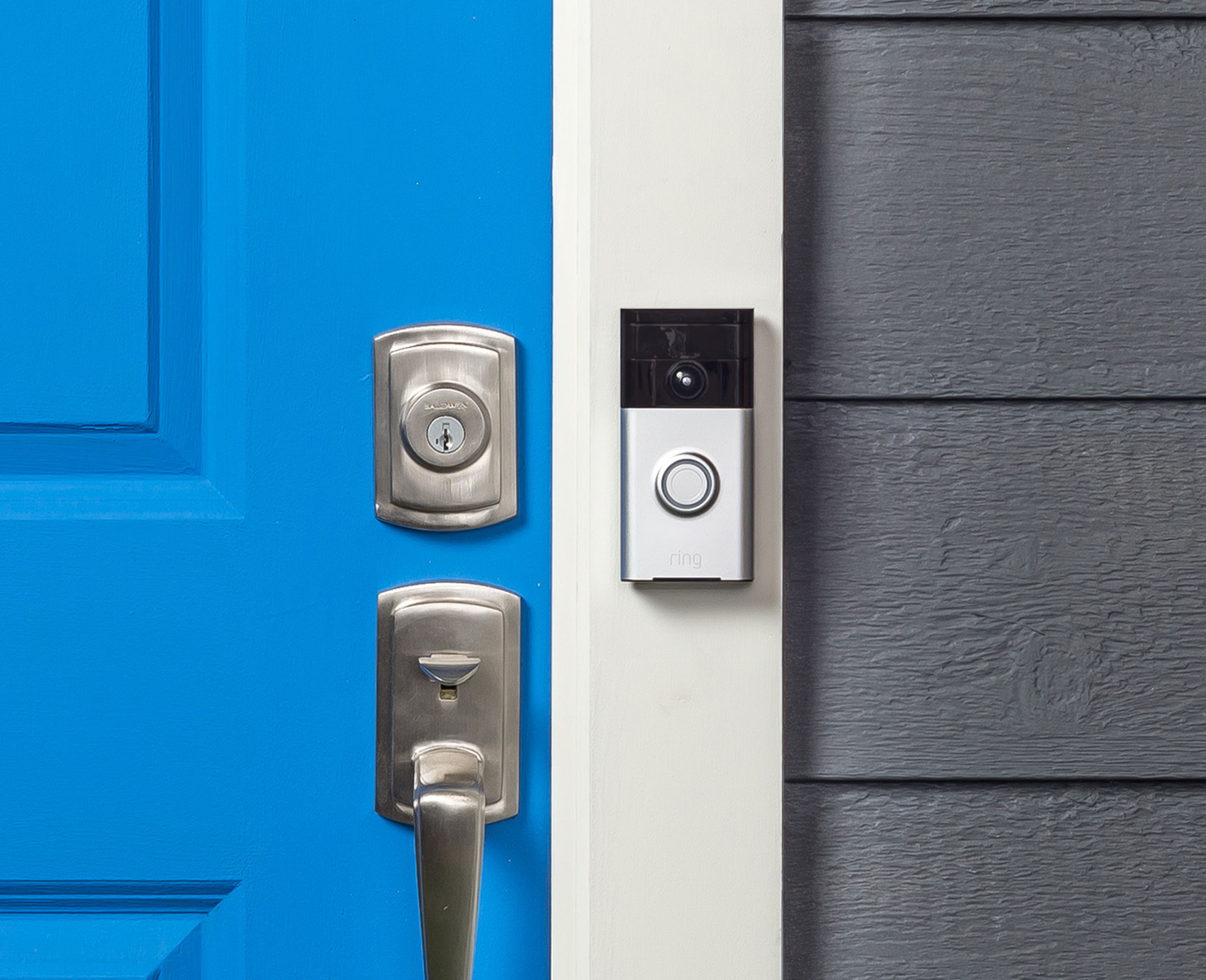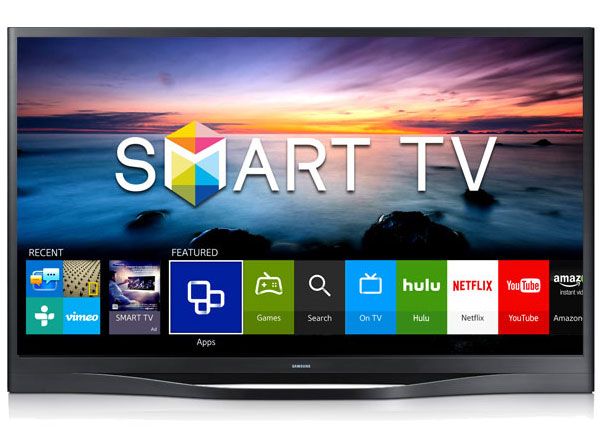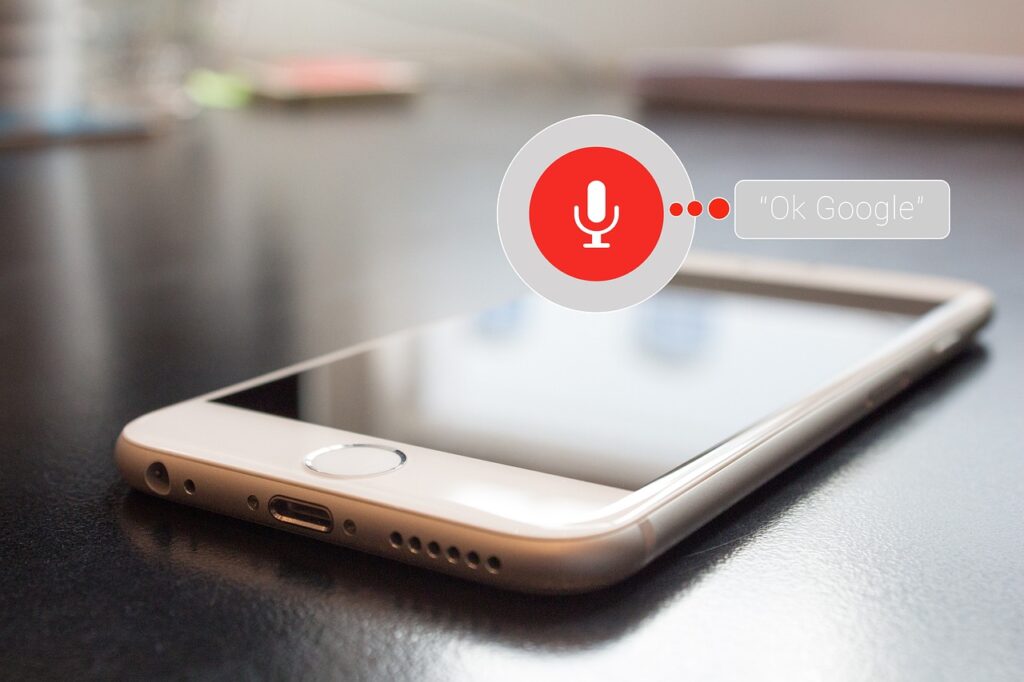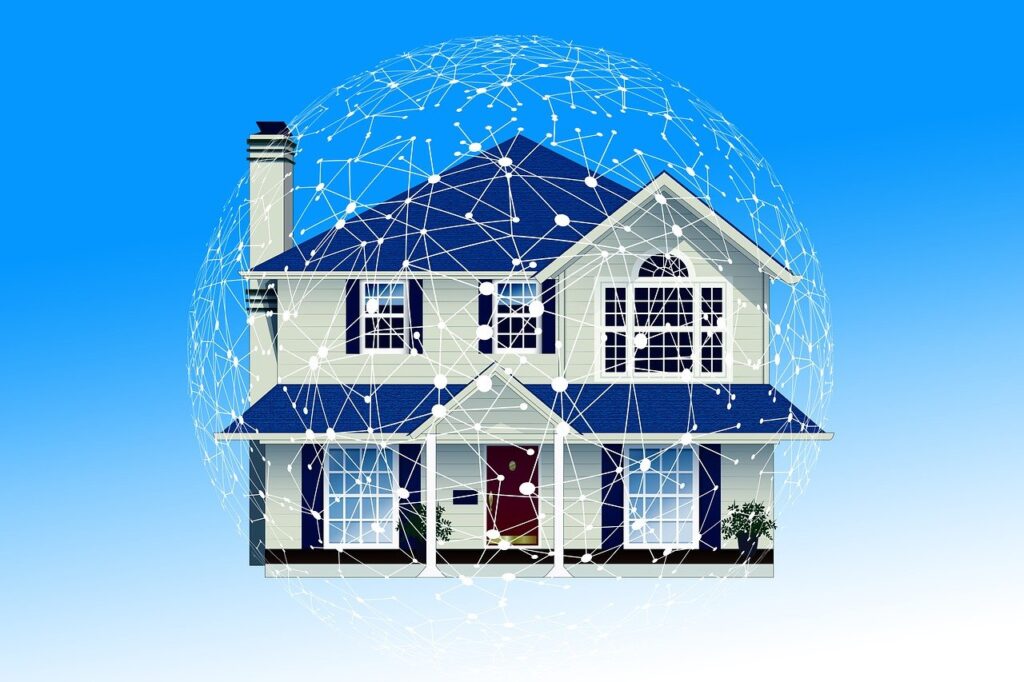
The vision of the 1960s for the 2020s might have included flying cars and robot maids, and while the latter hasn’t quite materialized as predicted, our homes are undeniably growing more futuristic by the year, thanks to the widespread adoption of smart home devices. Today, it’s a rare find to encounter a newly built home without at least one intelligent appliance, whether it’s a smart lock, a smart light, a smart fridge, or another ‘brainy appliance’ designed to simplify daily life.
As a home inspector, I’ve seen firsthand how these Internet of Things (IoT) devices have transformed our living spaces, offering unparalleled convenience—from adjusting the thermostat with a tap on your phone before you even get out of bed on a chilly morning, to automating lighting and securing entryways. However, this impressive convenience comes with a significant trade-off: these devices must connect to your home Wi-Fi network, which, in turn, can open doors to cybercriminals. We’re not talking about traditional burglars looking to steal physical possessions, but rather those who can breach your home network to steal data, conduct surveillance, or even disrupt device functionality.
While the data on the frequency of such attacks isn’t yet abundant, and experts like Anton Dahbura, executive director of the Johns Hopkins University Information Security Institute, and Bruce Young, program lead and instructor of cybersecurity at Harrisburg University of Science and Technology, suggest it’s not a cause for panic just yet, it is crucial to adopt precautionary measures. As smart devices become further integrated into our lives, understanding and mitigating these risks is paramount. This article, informed by insights from cybersecurity professionals and real-world examples, will delve into the twelve smart devices that present the most significant security risks in 2025, helping you to make your smart home smarter and, more importantly, safer.

1. **Smart Locks**Smart locks, designed to offer keyless entry and remote access control, are a cornerstone of many modern smart homes, promising convenience and enhanced security. However, their very nature as a gateway to your physical property makes them a prime target for cyber-vulnerabilities. Bruce Young points out that IoT devices, by being monitored and managed remotely, inherently open the door to unauthorized access. If a smart lock is exploited, the physical security of your home is directly compromised.
The most common vulnerability for smart locks, like many IoT devices, stems from weak or default passwords. Many devices ship with factory-set passwords that are easily guessable or universal, acting as an open invitation for hackers if not changed immediately. Should a cybercriminal gain access, they could potentially unlock your door remotely, creating a severe physical security breach. Furthermore, if the smart lock is connected to a cloud service storing user data, that information could also be at risk.
Beyond direct access, an unsecured smart lock can serve as an entry point for a hacker to ‘hopscotch into places where they can obtain a homeowner’s credit card or bank information,’ as Anton Dahbura explains. Even an ‘innocuous’ device, once compromised, can allow a hacker to move laterally within your network, impacting cloud services connected to your phone or home network if security measures aren’t robust. This means that while a smart lock’s primary function is physical security, its digital vulnerabilities can lead to broader data theft and privacy invasion.
Read more about: Need a Reminder: The ’50s? These 12 Unforgettable Icons Were the Absolute Legends of Talent and the Decade’s Defining Moments!

2. **Smart Lightbulbs**At first glance, smart lightbulbs appear to be among the most innocuous smart home devices, offering simple conveniences like remote control and customizable lighting scenes. However, cybersecurity experts warn that even these seemingly harmless gadgets can become critical weak points in your home network’s defenses. Bruce Young highlights that even a device as simple as a smart lightbulb, once connected to your Wi-Fi, creates a potential vulnerability.
The risk associated with smart lightbulbs often arises from outdated firmware. Many manufacturers, in their rush to market, may not provide robust plans for regular software updates, leaving these devices susceptible to known security flaws that hackers can exploit. If a lightbulb’s firmware remains unpatched, it can become an easy target for cybercriminals seeking an entry point into your network. From there, they can ‘move laterally within your network, including cloud services connected to your phone or home network, if security measures aren’t strong,’ as Young cautions.
Furthermore, smart lightbulbs contribute to the overall ‘attack surface’ of your home network. Each device connected to your Wi-Fi needs to be properly secured with strong, unique passwords to prevent unauthorized access. If a lightbulb’s default password is left unchanged, or if your Wi-Fi network itself is unsecured, cybercriminals can leverage these vulnerabilities. This access, though initiated through a minor device, can lead to much larger problems, including access to sensitive personal information or the ability to conduct surveillance through other connected devices.
Read more about: Unmasking the Price Tag: 11 Sneaky Smart Home Costs That Can Quietly Drain Your Wallet

3. **Smart Refrigerators**Smart refrigerators represent the epitome of convenience in the modern kitchen, offering features like inventory tracking, recipe suggestions, and even integrated touchscreens for communication. However, as integral components of the ‘Internet of Things,’ these brainy appliances are not immune to the security risks that plague other connected devices. Their constant connection to your home Wi-Fi network makes them potential targets for hackers and cybercriminals, despite their seemingly benign function.
The primary concern with smart refrigerators, much like other smart appliances, revolves around the data they collect and the network access they maintain. These devices often require connection to company servers for their smart features to function, which means sensitive information, including potentially linked payment methods for online shopping, could be stored on these servers. A cyberattack on the company connected to your smart appliance could put this stored credit card and payment information at risk, as the context points out regarding general company-level breaches.
Moreover, if a hacker gains unauthorized access to your smart refrigerator through vulnerabilities such as weak or default passwords or an unsecured home network, they could use it as a pivot point. As the executive director of the Johns Hopkins University Information Security Institute, Anton Dahbura, warns, it is possible for a cyberattacker ‘to hopscotch into places where they can obtain a homeowner’s credit card or bank information.’ This lateral movement within your network underscores that even a smart fridge can be a conduit for broader data theft, highlighting the importance of securing every connected appliance.
Read more about: Unmasking the Price Tag: 11 Sneaky Smart Home Costs That Can Quietly Drain Your Wallet

4. **Ring Doorbell Cameras**Ring doorbell cameras have become a ubiquitous smart home security solution, offering peace of mind through real-time video surveillance and remote communication with visitors. Yet, these devices, precisely because they are designed for visual and audio capture and remote access, carry significant security and privacy risks. They are explicitly identified as devices through which hackers could, in theory, conduct surveillance via cameras and microphones.
Real-world incidents have tragically demonstrated this vulnerability. The context mentions ‘harrowing incidents involved attackers who lashed out verbally at homeowners through hacked smart cameras like those by Ring.’ This direct invasion of privacy is a stark reminder that compromised security cameras can allow cybercriminals to not only spy on unsuspecting users but also to interact with them, creating a deeply unsettling and potentially dangerous situation for homeowners. The ability to listen in or even speak through a hacked device turns convenience into a direct threat.
The underlying vulnerabilities often include weak or default passwords and outdated firmware. If a Ring doorbell camera isn’t properly secured, it can become an easy target. Once a hacker gains access to such an IoT device, the danger extends beyond just the camera itself. Young explains, ‘Once a hacker gains access to one IoT device, they could potentially move laterally within your network, including cloud services connected to your phone or home network, if security measures aren’t strong.’ This means a compromised doorbell camera could be the initial breach point for accessing other sensitive data and devices within your smart home ecosystem.
Read more about: Unmasking the Price Tag: 11 Sneaky Smart Home Costs That Can Quietly Drain Your Wallet

5. **Baby Monitors**Baby monitors equipped with smart features, including cameras and internet connectivity, offer parents the ability to keep a watchful eye on their children from anywhere. However, the very technology that provides this peace of mind also opens a gateway to severe privacy and security concerns. The potential for hackers to conduct surveillance through cameras and microphones is a significant risk, as highlighted by a study from the journal Computers in Human Behavior concerning smart appliance digital harms.
The dangers posed by insecure baby monitors are not merely theoretical. They were famously implicated in the 2016 Mirai botnet attack, which ‘infected insecure IoT devices like security cameras and baby monitors.’ This massive attack harnessed compromised devices into a botnet to launch one of the largest distributed denial-of-service (DDoS) attacks in history, disrupting major websites. While the Mirai attack focused on network disruption, it showcased how easily these devices can be compromised and weaponized if their security is lacking, making them vulnerable to direct surveillance.
The core issues typically stem from lax security practices, such as users failing to change default passwords or manufacturers neglecting to provide regular software updates. Unencrypted communication between the monitor and its paired app or network can also allow sensitive video and audio feeds to be intercepted by skilled attackers. These vulnerabilities make baby monitors particularly alarming, as a breach could not only expose intimate family moments to unauthorized viewers but also provide a foothold for hackers to explore other parts of your home network.
Read more about: Conquering Connectivity: The 15 Most Common Wi-Fi Problems Plaguing Modern Homes, and How to Fix Them
6. **Voice Assistants (e.g., Google Home, Amazon Alexa)**Voice assistants like Google Home and Amazon Alexa have become indispensable tools for many smart homes, seamlessly controlling lights, playing music, and answering queries with simple voice commands. Yet, their continuous listening capabilities, while enabling convenience, also position them as significant privacy and security risks. These devices are explicitly mentioned as susceptible to potential surveillance through microphones, collecting recordings of your conversations.
The danger of compromised voice assistants extends to ‘stolen data logs,’ as demonstrated by the Telesploit attack, which proved that attackers could ‘easily exploit Amazon Echo setups using Wi-Fi vulnerabilities.’ This attack highlights how crucial personal data, including recordings of your conversations, can be accessed by unauthorized parties if these devices are not adequately secured. Such breaches can expose sensitive personal information, creating detailed profiles of your habits and even socioeconomic level, as pointed out by Juan Tapiador, professor at UC3M.
Furthermore, researchers from IMDEA Networks and Northeastern University, among others, have uncovered that smart devices like virtual assistants can inadvertently expose Personally Identifiable Information (PII) through local network interactions. This includes unique device names and UUIDs that can be harvested by companies involved in surveillance capitalism without user awareness. Narseo Vallina-Rodriguez, Associate Research Professor of IMDEA Networks, explains how ‘spyware apps and advertising companies do abuse local network protocols to silently access such sensitive information without any user awareness,’ leveraging standard protocols like UPnP to indirectly access data that should be protected by mobile app permissions, such as geolocation. This makes voice assistants a profound entry point for privacy invasion and data exploitation.

7. **Smart Thermostats**Smart thermostats, offering energy optimization and remote climate control, are convenient but hold distinct vulnerabilities. Their deep integration into home networks makes them potential gateways for cyber threats, a concern vividly demonstrated by real-world hacking incidents.
As demonstrated at the DEF CON cybersecurity conference in 2018, hackers have successfully taken control of these devices. This isn’t just about discomfort; a compromised thermostat could disrupt comfort settings or even be manipulated to run up extreme energy costs, creating significant financial burdens.
Like many IoT devices, smart thermostats often suffer from weak default passwords or a lack of consistent firmware updates. Neglecting these basics provides an easy entry for criminals. Once breached, attackers can ‘move laterally within your network,’ as Bruce Young warns, making your climate control system a potential conduit for wider data theft.
Read more about: Unmasking the Price Tag: 11 Sneaky Smart Home Costs That Can Quietly Drain Your Wallet

8. **Smart TVs**Modern smart televisions are powerful internet-connected computers running apps and responding to voice commands. While enriching entertainment, this extensive connectivity introduces significant privacy and security risks, a concern highlighted by recent academic research findings.
Studies like ‘In the Room Where It Happens: Characterizing Local Communication and Threats in Smart Homes’ specifically list smart TVs among IoT devices that inadvertently expose sensitive data. These devices, often with microphones, collect viewing habits and potentially ambient conversations, which can be harvested by ‘companies involved in surveillance capitalism without user awareness.’
The primary risk often lies in the unintended exposure of Personally Identifiable Information (PII) via local network interactions. Vijay Prakash notes that IoT devices expose unique hardware addresses, UUIDs, or device names. Combined, these identifiers can render a household ‘very unique and easily identifiable,’ profiling your home simply through network presence.
Read more about: Unmasking the Price Tag: 11 Sneaky Smart Home Costs That Can Quietly Drain Your Wallet

9. **CCTV/Generic Smart Security Cameras**Beyond specific brands, the broader category of smart security cameras, including indoor and outdoor CCTV systems, presents distinct and alarming security vulnerabilities. Designed for continuous surveillance, they are prime targets for privacy invasion or unauthorized access to home feeds. The context explicitly names ‘CCTV cameras’ as critical, susceptible IoT devices.
These cameras are direct tools for hackers to conduct surveillance via microphones and cameras. The Computers in Human Behavior journal’s study on smart appliance digital harms underscores this risk. A compromised camera offers an unauthorized, live window into private spaces, often without homeowner knowledge, turning security into a severe privacy threat.
Vulnerabilities like weak default passwords and neglected firmware updates are typical entry points. If a smart security camera isn’t properly secured, it becomes an easy target. Bruce Young explains, ‘Once a hacker gains access to one IoT device, they could potentially move laterally within your network,’ making a compromised camera a launchpad for broader access.

10. **Smartphones and Tablets as IoT Controllers**Our smartphones and tablets are now essential control hubs for nearly all smart home devices, managing everything from lighting to security. This deep integration, coupled with their constant network presence, makes them significant yet often overlooked security risks, as recent research on local network interactions emphasizes.
The ‘In the Room Where It Happens’ study highlighted that mobile apps on these devices are key vectors for exposing Personally Identifiable Information (PII) in smart homes. Through standard local network protocols, they can inadvertently reveal unique device names, UUIDs, and even precise household geolocation data. This information is then susceptible to ‘harvesting by companies involved in surveillance capitalism without user awareness.’
Narseo Vallina-Rodriguez clarifies how ‘spyware apps and advertising companies do abuse local network protocols to silently access such sensitive information.’ They exploit standard protocols to indirectly acquire data normally protected by mobile app permissions. Thus, these convenience-enabling devices become profound conduits for privacy invasion, demanding stringent security measures for themselves.
Read more about: The Algorithmic Battlefield: A Deep Dive into the US-China AI Arms Race and the Urgent Call for Global Governance
11. **General Smart Home Appliances (e.g., Ovens, Dishwashers)**Beyond smart refrigerators, an expanding range of ‘brainy appliances’ like smart ovens, dishwashers, and washing machines are connecting to home networks. These offer convenience but also introduce a shared set of significant, yet often underestimated, security risks that homeowners must address.
These appliances, similar to smart fridges, collect data and maintain network access. Many depend on company servers for smart features, potentially storing sensitive user information, including linked payment methods. A cyberattack on the manufacturer’s servers could expose this data, highlighting broader supply chain risks.
Should a hacker compromise one through vulnerabilities like weak default passwords, it can serve as a pivot point. Anton Dahbura explains an attacker can ‘hopscotch into places where they can obtain a homeowner’s credit card or bank information’ from an ‘innocuous’ device. Any smart appliance, regardless of simplicity, can become a digital backdoor to personal and financial data.

12. **Smart Home Routers/Gateways**Your smart home router or gateway is, without exaggeration, the central pillar of your smart home’s security. It’s the crucial connection point for all your IoT devices to the internet and each other. The convenience of smart devices connecting to your Wi-Fi also establishes the primary gateway for potential vulnerabilities.
An unsecured home Wi-Fi network is a ‘Common Way that Hackers Break Into Your Smart Appliances.’ If your router keeps its default password or lacks robust protection, it’s an open invitation for cybercriminals. Bruce Young stresses that an open network allows criminals to ‘easily break into your smart appliances,’ compromising your entire ecosystem.
Once a hacker gains control, they achieve a central command point, monitoring traffic and accessing every connected IoT device. As Anton Dahbura cautions, a compromised ‘innocuous’ device, like your router, allows lateral movement within your network. Securing this foundational device is paramount to safeguarding your entire smart home from cascading cyber threats.
—
Having explored specific smart device risks, let’s now cover how these threats materialize and, crucially, what you can do to counter them. Understanding the ‘how’ is fundamental to building a truly secure smart home.
**Common Ways that Hackers Break Into Your Smart Appliances**
Hackers often exploit straightforward, preventable vulnerabilities. As a home inspector, I consistently observe that ‘the problem here isn’t the technology itself, but how it’s built and used,’ pointing to common, remediable entry points.
A primary culprit is **Weak or Default Passwords**. Many smart devices ship with easily guessable factory-set passwords. Failing to change these immediately creates an open invitation for cybercriminals, who actively scan for such vulnerabilities.
Equally critical are **Unsecured Networks**. Leaving your home Wi-Fi network open is a direct security lapse, allowing cybercriminals effortless access to your smart appliances. Strong, password-protected network security is non-negotiable.
**Outdated Firmware** presents another significant weakness. Many smart devices receive infrequent updates, or users neglect them, leaving known security flaws unpatched. Bruce Young explains that outdated software is a prime target for exploitation, making regular updates essential.
Finally, **Phishing and Malware** remain persistent threats. Cybercriminals manipulate users into downloading malicious software or divulging sensitive information through deceptive messages. These tactics can grant hackers device access and data, even exposing live camera feeds, as Anton Dahbura warns.
**How to Protect Your Smart Home**
Securing your smart home is manageable, not insurmountable. Your defense strategy should directly address known vulnerabilities. The simplest approach is to ‘look at the common ways hackers can break in and start from there.’
First, prioritize **strong, unique passwords** for every smart device and your Wi-Fi network. Immediately replace all factory-set defaults with complex combinations, establishing a critical security baseline.
Next, **secure your home network** with robust password protection (WPA3 or WPA2). Consider a dedicated guest Wi-Fi network for smart devices to isolate potential breaches. Additionally, **disable unnecessary access accounts**.
Consistently **update your software whenever possible**. Regularly check for and install all available firmware updates. If a device lacks update support, consider replacing it with a product from a **reputable company** known for robust security.
Furthermore, **limit the devices managing your IoT appliances**. Be highly suspicious of offers via email or pop-ups. Stay informed about the latest phishing scams. Crucially, **install two-factor authentication (2FA) wherever available**, adding an indispensable layer of security.
**How to Tell if Your Smart Home Has Been Hacked**
While cybercriminals aim for stealth, a compromised smart home usually leaves clues. Bruce Young suggests a primary indicator is **seeing unfamiliar devices connected to your WiFi**. Regularly checking your router settings or using network scanning tools can reveal these unauthorized presences.
Other red flags include **Unfamiliar Programs** appearing on your devices. Unknown software could be malware, quietly consuming resources and monitoring activities. A sudden surge in **Popups and Ads** might also signal adware or malware infection.
Vigilance is key for **Unauthorized Logins**. Any notification of an unknown device attempting account access is a strong indication of a breach. Similarly, unexpected **Password Reset Requests** or being suddenly logged out are critical warnings. Finally, increased **Alerts from Security Software** suggest your network or devices may be compromised, prompting immediate investigation.
**What to Do If Your Smart Home Device Is Hacked**
If you suspect a smart home breach, immediate, decisive action is essential. Bruce Young advises the first step is to **disconnect the compromised devices from your Internet access**. This crucial move prevents criminals from further infiltrating your network.
Once isolated, prioritize **changing every single password** for your affected IoT devices and appliances, ensuring they are unique and strong. Subsequently, update passwords for all sensitive online platforms—social media, bank accounts, email—that might have been exposed. If you use protective services like LifeLock, notify them promptly. Even after these steps, maintaining **vigilance for unusual activity** is vital to confirm the threat’s full eradication.
—
The allure of a smart home is undeniable, offering unprecedented convenience that steadily redefines modern living. Yet, this technological marvel demands vigilance: the responsibility to proactively secure your digital domain. By understanding vulnerabilities, embracing a preventative security mindset, and diligently implementing the actionable advice presented, you can confidently navigate the evolving smart home landscape. Our aim isn’t just to build smarter homes, but to ensure they are fundamentally safer spaces where innovation genuinely enhances life without compromising privacy or peace of mind. Let’s build a secure future, one smart device at a time.





